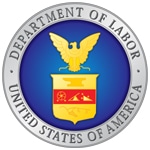FELA Update
By Mark Allen
Coordinator of UTU Designated Legal Counsel
The Federal Employers’ Liability Act (FELA) was enacted by Congress in 1908 to give railroad employees the right, under federal law, to recover damages from their employers for injuries occurring at work.
However, generally, there must be proof of negligence on the part of the railroad that caused or contributed to the employee’s injury. Simply put, this means that the railroad must exercise reasonable care for the safety of its employees. The railroad must provide its employees with a reasonably safe place to work. Its failure to do so is negligence.
The duty to provide a safe place to work includes the furnishing of safe tools and equipment, the selection of proper methods to do the work, the furnishing of sufficient help, and the adoption and enforcement of proper procedures. The railroad may also be negligent if it fails to adopt and enforce safety rules and practices, or by allowing unsafe practices to exist. The fact that unsafe practices and customs are standard in the industry is no defense.
An exception to the requirement for proof of negligence under FELA exists when an injury occurs because the railroad has violated either the Safety Appliance Act or the Locomotive Inspection Act.
The Safety Appliance Act relates to railroad cars and their safety devices and requires devices such as couplers, power brakes, grab irons, etc., to be free from defects. The Locomotive Inspection Act requires that the railroad keep its locomotives and tenders in proper and safe condition.
If the violation of either one of these laws causes injury to an employee, proof of negligence is not required and the railroad is strictly held at fault.
When you have a question about whether an action of the railroad was negligent that caused you injury or whether proof of negligence is required, contact a UTU Designated Legal Counsel. Go to www.utu.org and click on “Designated Legal Counsel” on the left side of the page; or ask your local union officers for the list.
 The Labor Department wants companies to begin filing all workplace injury and illness reports electronically so they are available for anyone in the public to see.
The Labor Department wants companies to begin filing all workplace injury and illness reports electronically so they are available for anyone in the public to see.